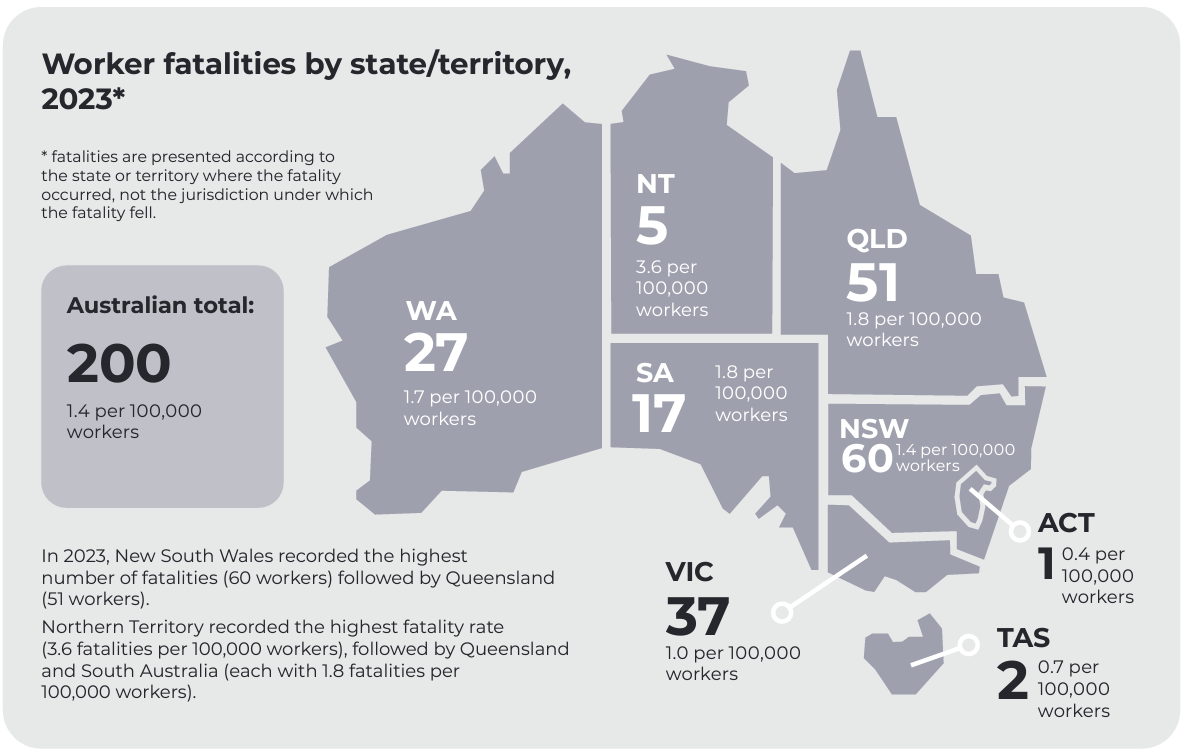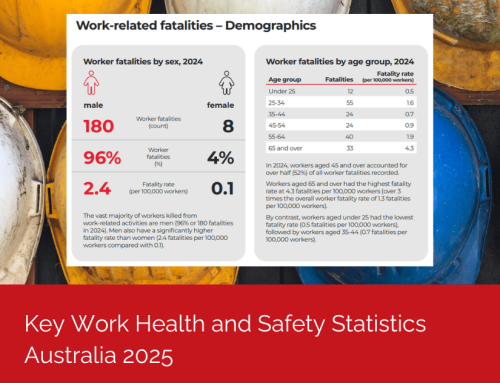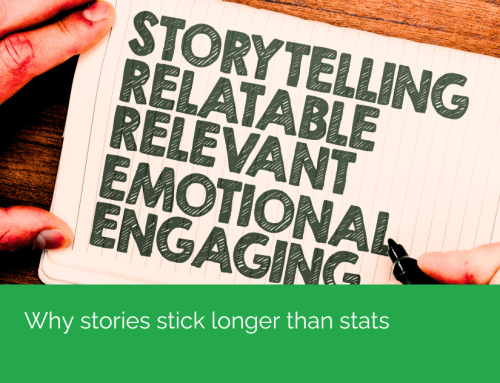Safe Work Australia’s Key Work Health and Safety Statistics 2024 is a snapshot of WHS in Australia, analysing national safety data on work-related fatalities, injuries, and diseases.
Work-Related Fatalities and Injuries
In 2023, 200 workers tragically lost their lives to work-related injuries, a 5% increase from the 5-year average of 191. While Australia’s fatality rate has decreased by 19% over the past decade, with 1.4 deaths per 100,000 workers, it remains a significant concern.

The work-related injury rate in Australia sits at 3.5%, well below the global average of 12.1%. However, this improvement should not overshadow the fact that certain industries continue to face disproportionately higher risks.
High-risk industries
A staggering 76% of all traumatic work-related fatalities and 61% of serious workers’ compensation claims occurred in just six industries which are:
• Agriculture, forestry and fishing
• Public administration and safety
• Transport, postal and warehousing
• Manufacturing
• Health care and social assistance, and
• Construction
When we look more closely at the fatality rate, 62% of worker fatalities were from these three industries:

Agriculture, forestry, and fishing – Despite a decline in fatalities by 25% compared to the 5-year average, this sector still saw 27 fatalities in 2023.
Transport, postal, and warehousing – Accounting for the largest share of fatalities, with 51 deaths, this sector continues to be one of the most dangerous industries.
Construction – With 45 worker fatalities, this sector experienced a 36% increase compared to its 5-year average.
These industries have consistently high fatality rates, and vehicle incidents remain the leading cause of deaths across all sectors, representing 42% of worker fatalities. Additionally, falls from heights saw a sharp 71% increase, emphasising the importance of heightened safety measures, particularly in construction.
Mental health in the workplace
While physical injuries dominate the discussion around workplace safety, mental health is increasingly becoming a critical focus. Mental health conditions accounted for 10.5% of serious workers’ compensation claims in 2023, reflecting a growing awareness of psychosocial hazards in the workplace.
The data shows that workers who file mental health claims often experience longer absences from work, with the median time lost being 37 weeks, compared to just 7 weeks for other types of injuries. The financial impact of these claims is also substantial, with median compensation for mental health conditions reaching $65,400, significantly higher than for physical injuries.
Economic impact of workplace injuries
Although peoples health and safety is the most important, Safe Work Australia’s research highlights the economic benefits of reducing workplace injuries and illnesses. If such incidents were eliminated, Australia’s economy would grow by $28.6 billion annually, with an estimated 185,500 new full-time jobs created.
What does this means for Australian workplaces?
These statistics serve as a stark reminder that while progress has been made, much more work is needed to protect Australian workers, especially in high-risk industries. Understanding the data specific to your sector and nature of work is a vital step in implementing targeted strategies that reduce risks, prevent fatalities, and support worker well-being in your workplace.
Safe Work Australia provides a range of tools and resources, including their interactive platform, Our Data. Your Stories, where organisations can explore detailed data relevant to their industry.
By using this data, companies can identify key areas for improvement and work towards creating safer, healthier workplaces for everyone.






